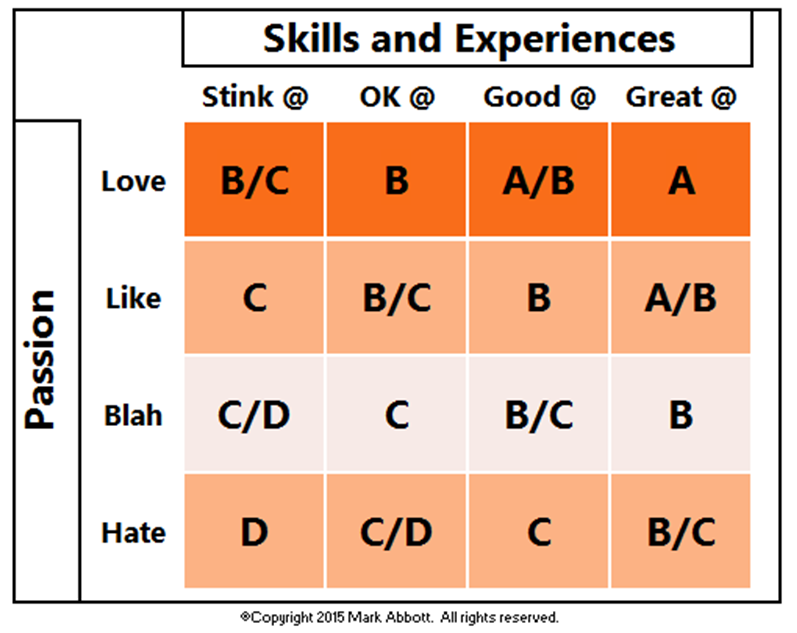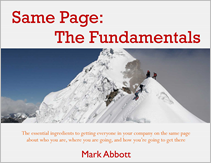
Photo courtesy of Nan Palmero
Imagine you’re the head coach of a basketball team and you get ejected during a really important game. The good news is you can coach from the locker room. The bad news is you won’t have access to the scoreboard or any data. Did your job just get tougher? Absolutely.
Or picture a plane flying from London to New York City. A couple of hours out, way over the Atlantic Ocean, the captain announces, “I’ve got bad news and good news. The bad news is only one of our plane’s gauges is working, and not only are we hopelessly lost, but I have no idea how much fuel we have left. The good news is the speedometer is working, and boy, we are making great time!”
Nobody would want to be in either of these situations, yet this is exactly the kind of situation in which we place ourselves when we attempt to build a Smart and Healthy company without a scorecard.
Most organizations are flying with a woefully inadequate number of gauges to help them understand:
A- where they are,
B- how their critical functions are performing versus expectations/design/normal/plan, and
C- the best path to get them to where they want to go.
And scorecards are not just for senior leadership. Great scorecards ensure that everyone is on the same page with regard to what is important and should not only be measured, but improved upon.
To build a great scorecard, there are some “scorecard truths” you must understand.
1. What gets measured, gets done. Numbers create accountability. Enough said.
2. Managers must inspect what they expect. It’s tough to inspect or improve what cannot be measured.
3. Everyone must have a number. It’s one of the golden rules of building and scaling a smart & healthy organization. People need to know what numbers they are responsible for if they’re going to understand what their role is in achieving the company’s vision.
4. We live in an age of transparency. Assume everyone knows what is going on. Scorecards enhance our ability to make sure we are all seeing, and talking about, the same thing because numbers cut through murky subjective communication between managers and their direct reports.
5. Trust, but verify. Of course you trust your employees. But, as one of my first bosses used to say over and over, “People are no damn good.” He didn’t mean that we are bad (i.e., evil,) just that we are human; we over-eat, we forget, we get distracted, we make mistakes, etc. “Trust, but verify” is just another way we acknowledge the human side of business.
6. Numbers create team work and healthy competition, so publish and share your scorecards. To illustrate the power of this truth, I refer to a story related in Dale Carnegie’s book How to Win Friends & Influence People.
A gentleman named Charles Schwab ran Bethlehem Steel back in the early 1900s, and he had a mill that was badly under-performing every other mill in the company. He felt the mill manager was capable, but he just couldn’t seem to figure out how to help him. Schwab met with the manager late one afternoon and after having a relatively unsatisfying discussion, he asked the manager for a large piece of chalk, walked over to one of the workers, asked him how many heats they would have made at the end of the shift. When the worker told him it would be six, Schwab chalked a big “6” in the middle of the floor and left.
When the night shift came in, they saw the big six in the middle of the floor and asked what it meant. The day people shared that the big boss wrote it down after asking how many heats the day shift made. The next morning, Schwab returned and found the “6” rubbed out and replaced with a “7”. When the day shift returned they, too, saw the “7” and decided they would show the night shift a thing or two; they left an enormous “10” before they went home. It wasn’t long before the mill went from last to first in production company-wide.
7. Scorecards tell your story. Think about how much easier it would be to convey your story if you could share a two or three-year long chart showing the week-by-week progression of two or three key metrics for each of your core processes (e.g., sales, production, client service, etc.).
8. Embrace accountability. Only one person really owns the scorecard, and only one person owns each of the key metrics. If more than one person is accountable for something, no one is accountable! One person must own the scorecard, and that means making sure every component is updated on time so the scorecard can be published on time. Remember, per truth #3, everyone owns at least one key metric (e.g., sales owns the “new clients on-boarded” metric).
9. Scorecards must be current. Numbers help you solve problems faster. The most effective scorecards are based upon weekly numbers. Who wants to wait until the end of a month or a quarter to find out that something is off course?
10. They take time. Our experience in working with hundreds of companies has been that it takes three to six months to create a great scorecard, but it’s worth the effort because it helps us better see, communicate, and understand what we are doing. Consequently, they take time to create and refine because they inherently help us get smarter with regard to how to look at and measure what’s important. And they make us healthier as they help us all get on the Same Page with regard to who, what, where, when, why, and how.
11. Great scorecards make for great vacations! Imagine sitting on a beach, looking at your weekly scorecard, and being able to relax knowing everything is humming. What’s that worth?
12. Scorecards are a never-ending journey. They change, just as everything does, and the metrics you’re measuring must be reviewed and revised, as necessary, on a regular basis. Add “Review Scorecard” to your quarterly planning/review process.
13. Scorecards take work, but they are worth it. Hopefully, truths 1-12 show why they are one of the critical components associated with building and scaling a Smart and Healthy organization.
Enough said.
Until next time, may you build with passion and confidence.












